
It is said that there are about 100 temples in the mountain, and contains many national treasures and important cultural properties such as “Kongobuji Temple Fudo-do Hall” and “Butsu Nehan-zu” (painting of Buddha nirvana). The most popular place in Koyasan is “Okunoin Temple”. The approach is about 2 kilometers in total, and it is said that the bridge over the river flowing through it represents the border of “this world”, “next life” and “Jodo” (Pure Land).
If you walk along the approach, you can see historical greats and the tombstones of actors that represent Japan. It is said that the “Mausoleum of Kobo Daishi”, which is the deepest part, still contains Kukai, the founder of Shingon sect. Introducing Okunoin Temple, Koyasan with such a spiritual atmosphere.
There are various memorial towers along the way to Okunoin Temple. There is also a memorial tower for those who died in the war and catastrophes, but the ones that attract attention are the tomb monuments of the many lords who have a long history. There are various great tombstones. There is also an unusual corporate tombstone that can be enjoyed by those who are not familiar with history.
The last bridge of the approach is “Gobyounohashi Bridge”. Crossing here is said to represent “Jodo”, and the other side of the bridge is a “spiritual area”, and photography, eating, drinking and smoking are prohibited.
In the “Toro-do” (Lantern Hall) where you can see the fire shining in front, a number of lanterns from time to time are enshrined. In the fire, there are two lanterns called “Shirakawa Lantern” dedicated by Emperor Shirakawa and “Kishin Lantern”, which have been burned for nearly 1000 years and are called “the fire that never disappears”.
“Mausoleum of Kobo Daishi” is behind the “Lantern Hall” and is the deepest part of Okunoin, the central sanctuary of the preaching of faith in Kobo-daishi. As mentioned above, photography, eating and drinking, smoking and private language are also prohibited, making it a sacred place. The founder Kukai of Shingon sect is Nyujo (calm contemplation) here at 4 am on April 22 in the current calendar, and is still practicing zen.
Koyasan, recognized as part of the World Heritage, is a sacred place indispensable for Japanese history. You can feel the greatness of nature because you are in the mountains, and you can learn about Japanese culture and history, and the Shingon sect. Why don’t you get away from the hustle and bustle of the day, experience an extraordinary space at Koyasan, and refresh your body and soul?
The most sacred place Mount Koyasan
Located at an altitude of 867 meters and registered as a World Cultural Heritage site, “Koyasan” is a sacred place of Shingon Esoteric Buddhism. Kukai (Kobo Daishi), the giant of the religious world, opened up as a training place. Over 1200 years, many tourists visit this place across the status and sects. Among them, the Okuninin which is said to be the most sacred place, it is considered to be a sacred place where there is “Gobyo” (Mausoleum) in the place where Kukai did Nyujo (*). Kobo Daishi will welcome the pilgrims at “Ichinohashi Bridge” which is the entrance of the Okunoin, and it is said that when the worshipers come home he will see them off here.
In Okunoin ‘s Gobyo, Kobo Daishi is still living and continuing meditation, and meals are delivered everyday. The state of the ceremony called “Shojinku” (meals for Kobodaishi) can also be seen by ordinary visitors.
Okunoin is believed to be a “dead world” where the soul comes after death. People who wanted to sleep by Kobo Daishi made a tombstone and it is said that the current approach has been completed.
More than 1,200 years after Kukai founded the exercise hall
It passes more than 1,200 years after Kukai (also known as Kobodaishi) founded the exercise hall of Buddha’s preach esoteric Buddhism to Mt. Koyasan. There is “Okunoin” at the center of the faith in Daishi. Whoever come here feels solemn and cannot help giving prayer.
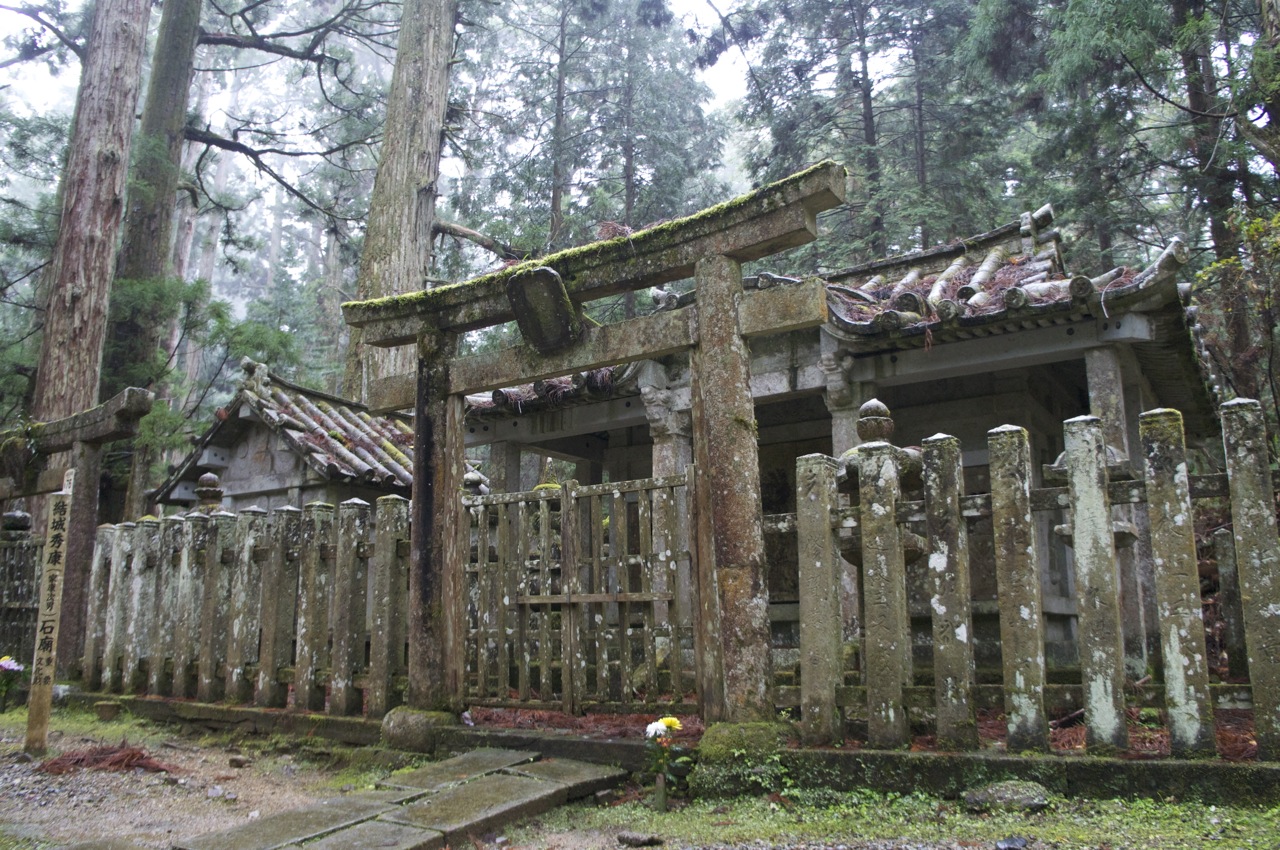
“Okunoin” is the center of the faith of Mt. Koyasan
“Okunoin” is the center of the faith of Mt. Koyasan and is the sacred place where Buddhism Great Teacher Kukai did Nyujo (*) at the age of 62 years old in 835.
*Nyujo is one of the ultimate ascetic practices of Shingon Esoteric Buddhism.
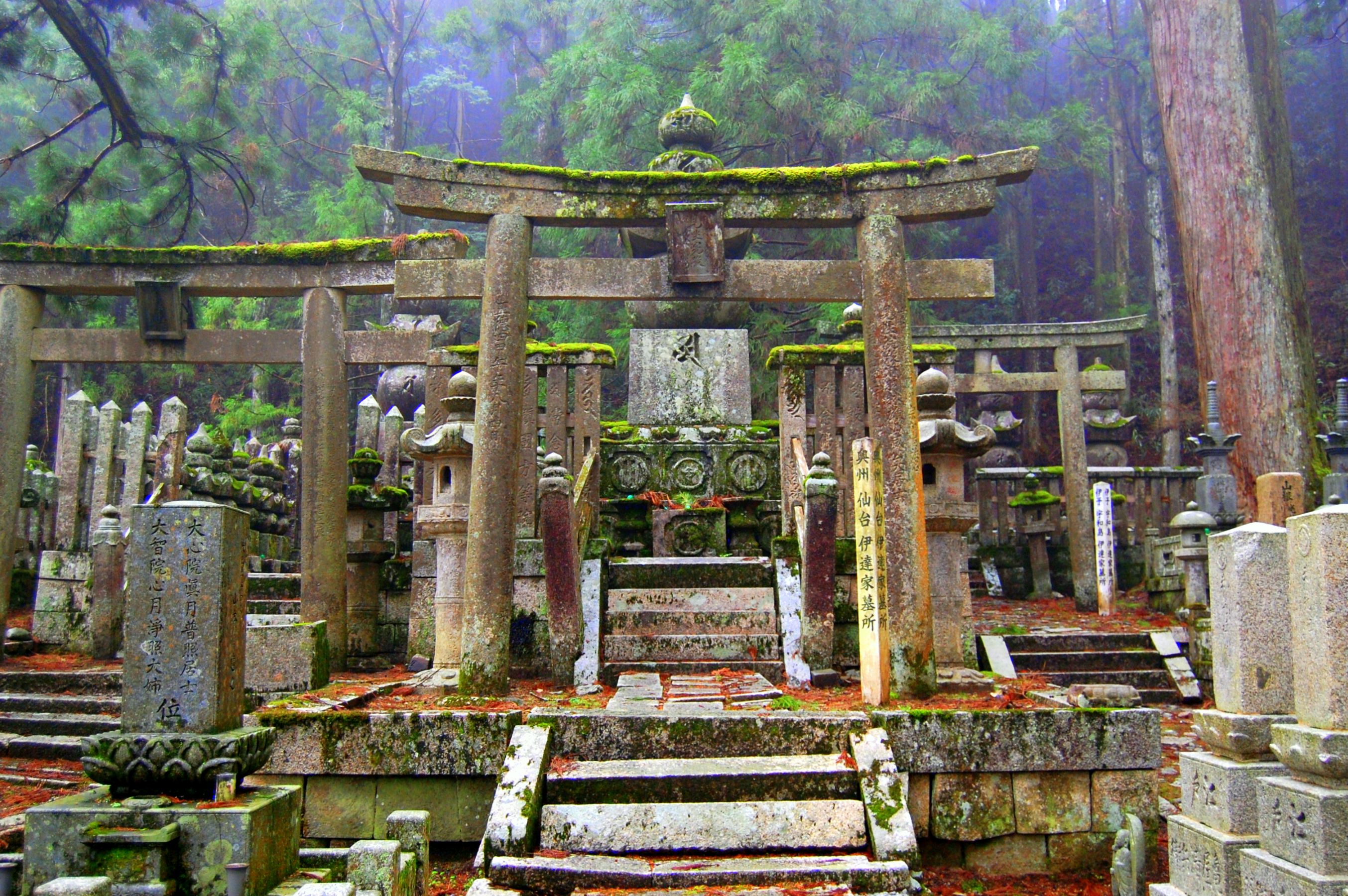
Kukai prays for peace in the world
Even now, it is still believed that Kukai prays for peace in the world and he continue saving every people. And a meal is sent to the “Okunoin” twice in the morning, at 6:00 a.m. and half past 10 a.m. every day. A general visitor can also see the ceremony called this “Shojinku.”
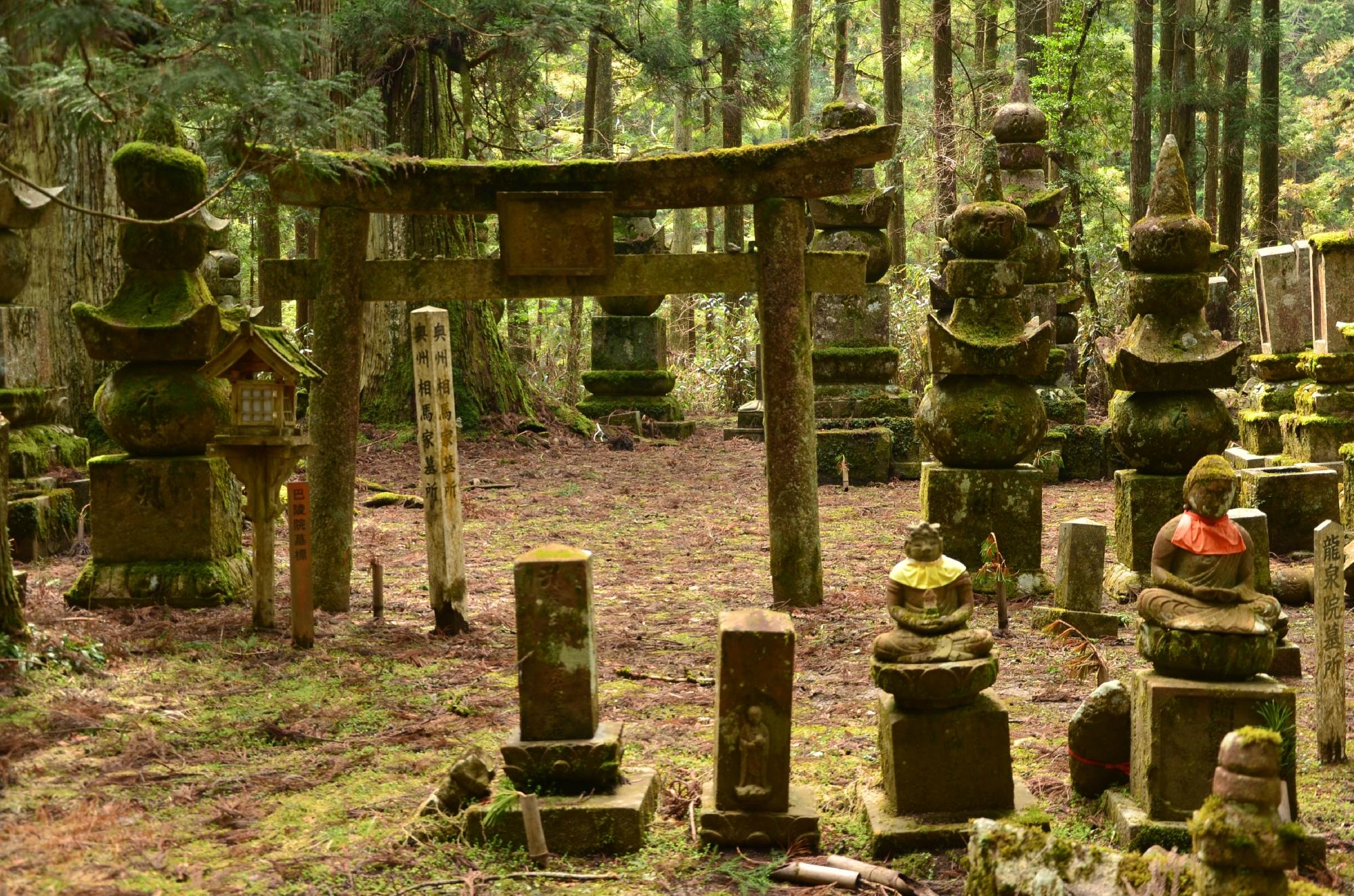
The graves and rest-in-peace pagodas of 200,000
It is from the late Heian period to the Kamakura period that the approach was made.
The approach is spreading out approximately 1.9km from the entrance of “Ichinohashi” to “Gobyo” (Mausoleum) where Kukai is still continuing meditation. Both sides of the approach, the graves and rest-in-peace pagodas of 200,000 stand in a row.
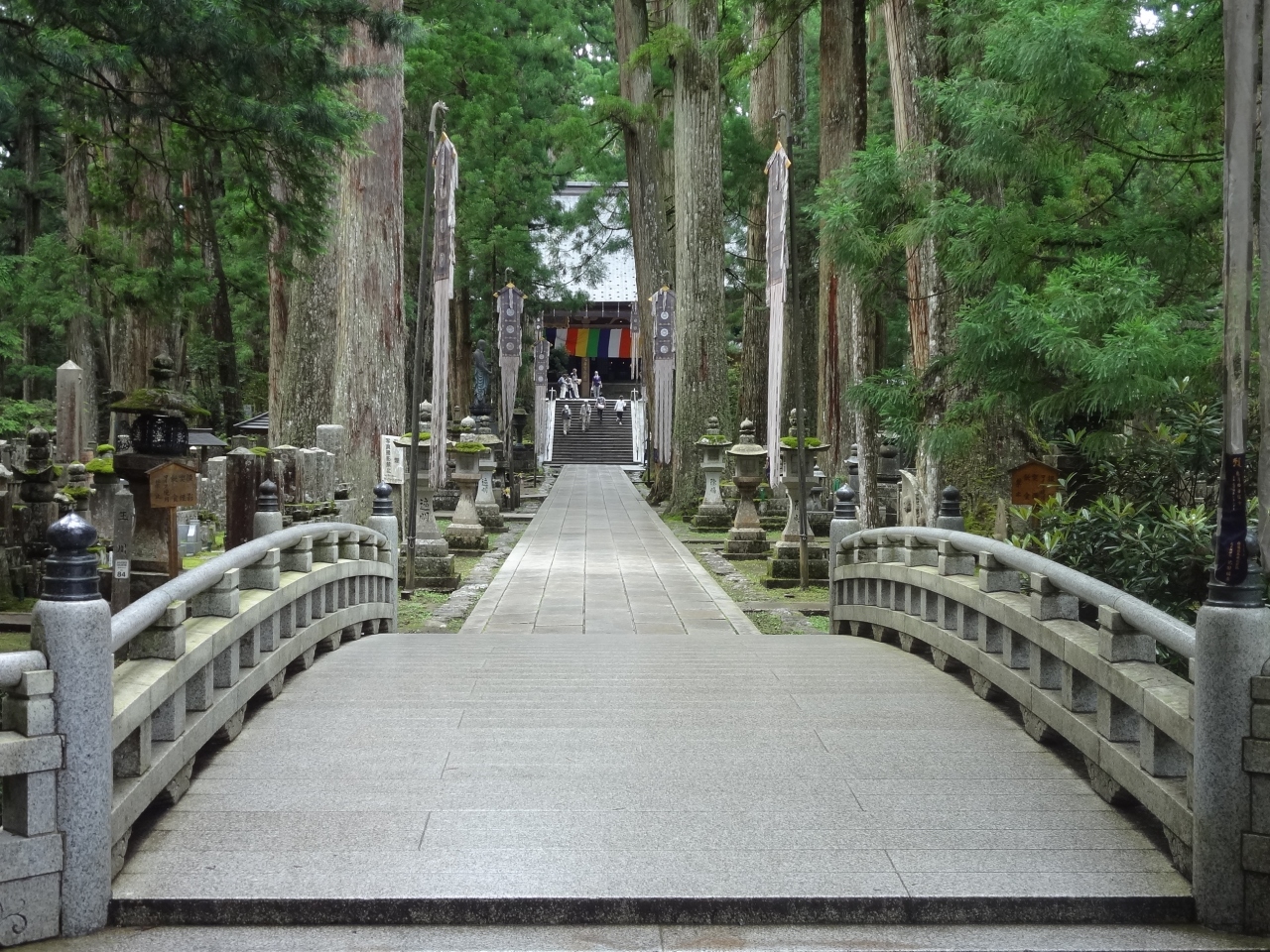
Unique mind space spreads out
The maximum rest-in-peace pagoda in “Okunoin” is for mother of Dainagon (major councilor) of Tadanaga TOKUGAWA of Suruga Province, and height is 6 meters.
In Mt. Koyasan Okunoin Temple, unique mind space spreads out so as to enshrine friends and foes alike.
There are many cemeteries of the historical person.
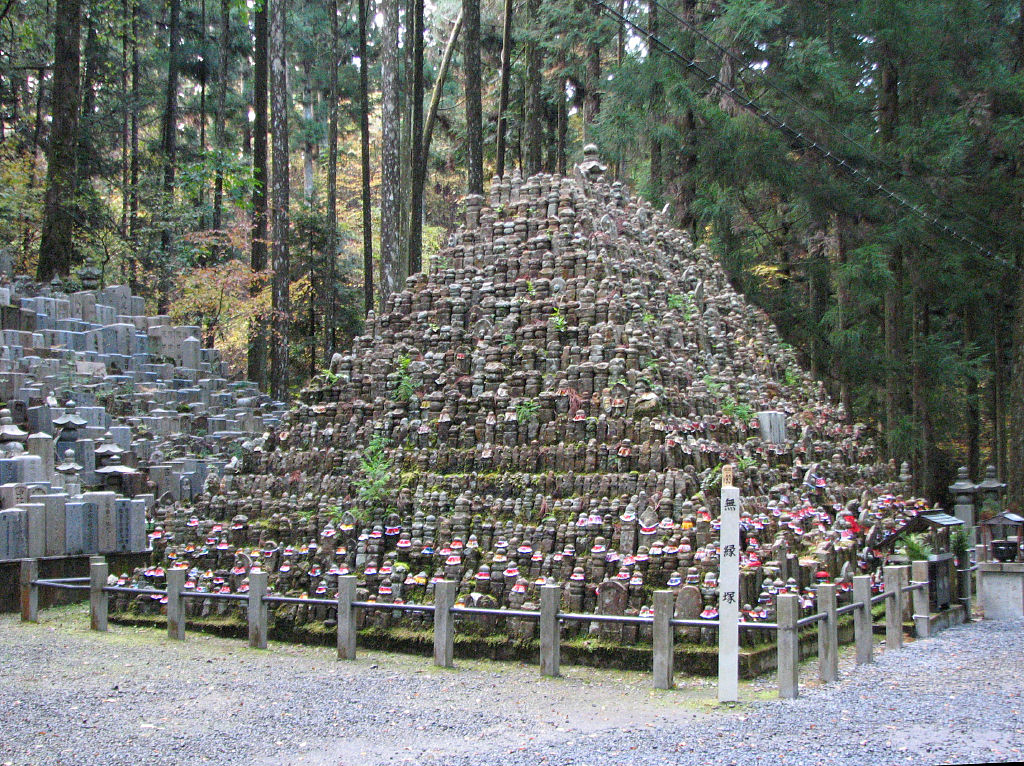
Information(Access, Price/Charge, Tel, Address, Official site, etc.)
| Name: | Koyasan Okunoin |
| Address: | Koyasan 550 Itogun Koyacho, Wakayama 648-0211 Japan |
| Access: | Nankai Koyasan Line to Gokurakubashi Station, then Nankai Koyasan Cable to Koyasan Station |
| Tel: | (+81) 736-56-2002 |
| Price / Charge: | Free Note: The following facilities are charged. Kongobuji Temple, Kondo Hall, Daito Tower, Reihokan Museum, Koyasan Daishi Organization, Mausoleums of Tokugawa clan Please refer the official web page. |
| Official site: | http://www.koyasan.or.jp/ |
Leave a Reply